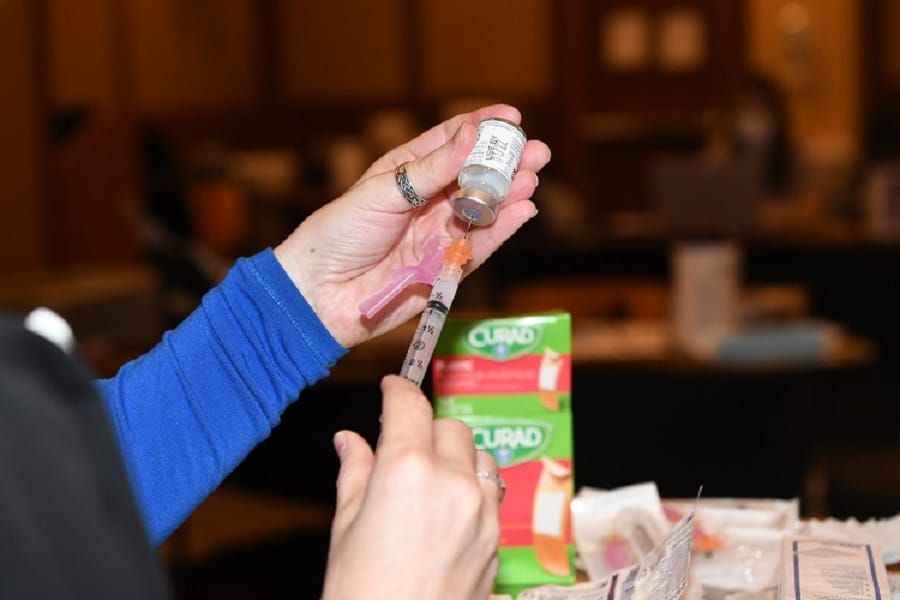The COVID-19 pandemic has reminded everyone that the everyday world we notice can be undone by the microscopic world we forget.
And as the delta variant sends more (mostly unvaccinated) citizens to already crowded ICUs, healthcare experts offer their own reminder: the best way to protect everyday life is to get vaccinated.
As Dr. Jeffrey Weinstein, patient safety officer at Kettering Health, shared:
“We are seeing that the large majority of hospitalizations and deaths from COVID-19 are occurring in the unvaccinated population. Even young people who were not vaccinated are developing severe disease and dying.”
This contrast—between filled hospitals and available vaccine appointments—brings into focus the questions some have about the vaccines, namely their origins and use.
- Can they be trusted since they were made so quickly?
- Do they affect my DNA?
- Do they contain a live virus?
And in light of the FDA’s recent approval of the first COVID vaccine, the question encompassing all others seems to be “How can I trust the vaccine?”
Learning to spell “vaccine” with “mRNA”
Moving at “warp speed,” Pfizer and Moderna received emergency use authorization (EUA) in December 2020 for their mRNA vaccines. But few people knew about mRNA—let alone that it has been in the making since the days of disco.
“While mRNA has been studied for many years as a technique to create a vaccine,” shares Dr. Weinstein, “the Pfizer and Moderna COVID-19 vaccines are the first two to complete clinical trials in humans and receive full or emergency authorization from the FDA.”
Forty years of mRNA development and research later, the COVID-19 pandemic provided the proving ground for this new, yet not-so-new vaccine approach.
But what took mRNA from an idea to the frontier of public health was one central notion: it’s what’s inside a person that counts.
Imperfect and amazing: the immune system
When a virus enters the body, its goal is to spread. So, it replicates. To do that, it hijacks a cell—the most industrious factory in the world—and gives instructions (its RNA) to the cell to make copies.
The immune system, though, stands ready to respond. “The human immune system is made of complex and highly effective processes that fight invaders such as bacteria, viruses, other microorganisms and even cancer cells,” shared Dr. Weinstein. Weapons in its arsenal include
- White blood cells, which attack the virus. They often leave behind pieces of the virus, called antigens. The body sees these antigens as a threat, sending antibodies after them.
- Memory B cells, which are the white blood cells that create the antibodies.
- Memory T cells, which are white blood cells that help memory B cells. These cells remember an antigen if it enters the body again. When others refer to “natural immunity,” they’re referring to these cells.
The immune system is amazing. But it’s imperfect.
It often doesn’t respond fast enough. And illness occurs. The immune system can also “become vulnerable when weakened by certain medications, diseases, and advancing age,” said Dr. Weinstein.
What the immune system needs is backup. And this is where vaccines, like mRNA vaccines, make all the difference.
mRNA vaccines: what’s different?
All vaccines collaborate with the body’s immune system. But mRNA vaccines collaborate differently than previous kinds.
As Dr. Weinstein explains, “Most older vaccines use a live but weakened or dead virus to stimulate the immune system. mRNA vaccines direct our cells to produce the viral protein.”
Past vaccines got the immune system’s attention using a harmless version of a virus. But mRNA vaccines take the fight directly to where it starts: the cell.
In January 2020, when scientists decoded SARS-CoV-2’s genetic code (the virus that causes COVID), mRNA-vaccine developers had more than enough to develop a vaccine.
Using “protein plagiarism” to protect the body
Messenger RNA vaccines work as their name suggests: like a message in a bottle, they deliver instructions to our cells.
As Dr. Weinstein mentioned, the mRNA vaccines deliver only a segment of a virus’s genetic code (its RNA)—like a chapter from a long novel—to the cell. And the cell copies that chapter over and over. The segment (or chapter) the cell receives from the mRNA COVID-19 vaccines instructs them to create the infamous “S,” or spike,” protein the virus uses to attach to a cell.
Think of it as “protein plagiarism.” This is what sets mRNA apart—and makes it a medical marvel.
These harmless spike proteins appear on the cell’s surface. And the immune system responds to the presence of the proteins. This is when most people feel the vaccines’ typical side effects (a day or two of chills, headache, pain, etc.).
Afterward, the body’s memory cells remember that protein and will attack it if the virus enters the body, minimizing infection and limiting severe disease.
All without exposing the body to any version of the virus.
What it means for public health today and tomorrow
mRNA is fragile. So, it doesn’t stay in the body for long. The cell receives the information, and the body breaks it down and gets rid of it.
This means it never reaches a cell’s nucleus, where DNA lives. So, the set of genetic instructions that makes a person who they are is safe; COVID, on the other hand, isn’t.
And as everyone wonders what everyday life may look like after the pandemic, mRNA will be a part of protecting it. And not just against infectious diseases. Clinical trials have shown its uses could include treatment for types of cancer and even allergies.
As more studies address the current vaccines’ effectiveness against new COVID variants, public-health experts offer another reminder. The point isn’t to see how today’s vaccines fare against tomorrow’s variants.
The point is to protect yourself and your family against COVID today.
As Dr. Weinstein shared, “Please get vaccinated. Each death now is a tragedy that could have been prevented.”










